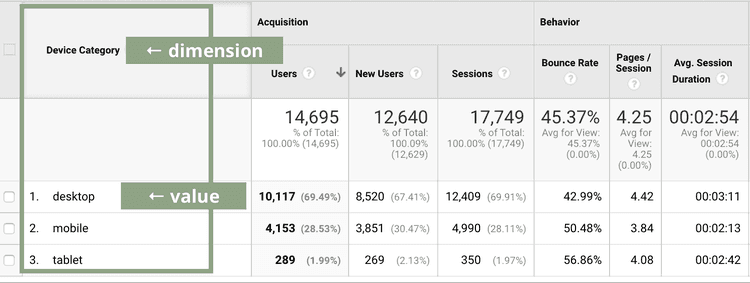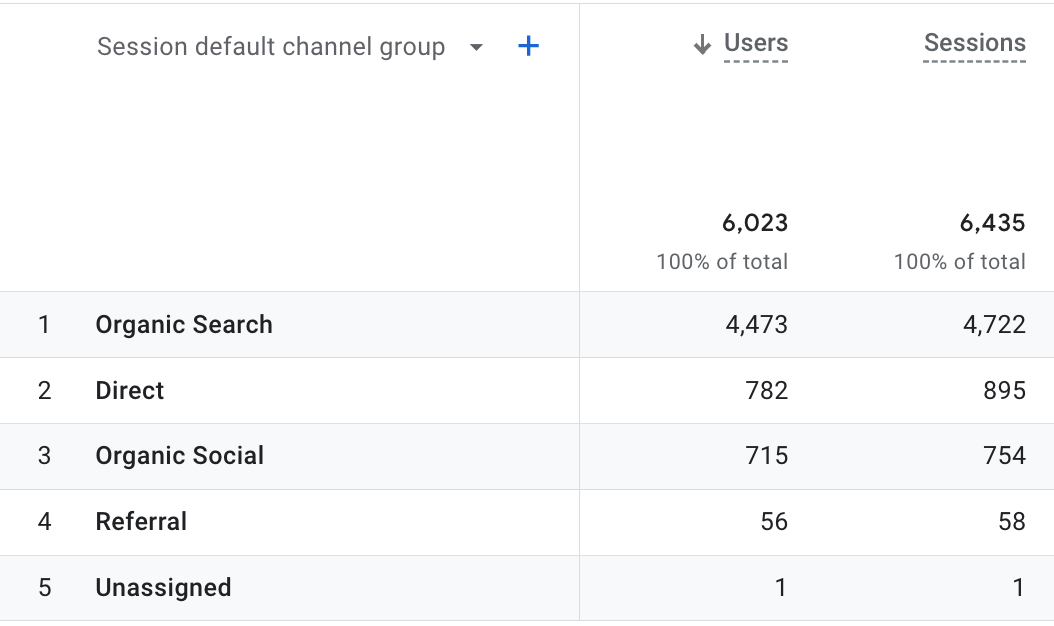Navigating the Depths of Secondary Dimension in Google Analytics: A Comprehensive Expedition on Its Performance
Additional measurements, though apparently straightforward at initial look, nurture a riches of untapped possible waiting to be utilized. As we get started on this journey to check out the nuanced performance of additional measurements, we will uncover just how this feature can illuminate patterns, introduce correlations, and eventually lead the means for informed decision-making in the electronic landscape (what is a “secondary dimension” in google analytics?).
Recognizing Secondary Measurements in Google Analytics

Comprehending exactly how additional measurements work is crucial for leveraging the complete power of Google Analytics. By combining main metrics with secondary dimensions, you can gain beneficial insights that drive educated decision-making and optimization methods.
Leveraging Second Dimensions for Data Evaluation
Building upon the fundamental understanding of how additional dimensions boost data analysis in Google Analytics, the utilization of these extra layers of info becomes vital in extracting important insights for notified decision-making and optimization methods. By leveraging additional dimensions, experts can delve much deeper right into the efficiency metrics by including more context to the primary measurements, thus uncovering concealed patterns and relationships that may not appear initially glance. This deeper level of evaluation makes it possible for organizations to much better comprehend user behavior, recognize patterns, and pinpoint areas for renovation.
Additionally, second dimensions provide an even more thorough sight of the information, allowing for division based upon different specifications such as demographics, tools, website traffic sources, and a lot more. This division facilitates a more granular evaluation, allowing organizations to customize their campaigns and techniques to certain audience segments for enhanced targeting and customization. Fundamentally, the calculated use second measurements equips organizations to make data-driven decisions that drive development and success in the electronic landscape.
Advanced Methods for Additional Measurement Implementation
Discovering complex techniques to harness the complete potential of additional dimensions in Google Analytics boosts the deepness and refinement of data analysis for strategic decision-making. One innovative strategy for implementing secondary dimensions is the usage of custom dimensions. Furthermore, incorporating additional measurements with advanced sections can offer also much more granular understandings by using numerous layers of division to the data.
Interpreting Insights With Second Measurements

When analyzing insights through secondary dimensions, it is crucial to take into consideration the context of the information and exactly how various dimensions interact with each various other. For instance, understanding which particular traffic sources result in greater conversion prices or recognizing which devices individuals prefer for making purchases can offer actionable insights for enhancing marketing campaigns and enhancing general site efficiency. By meticulously analyzing the information with secondary measurements in mind, organizations can make educated choices that drive significant results and enhance their digital existence.
Enhancing Performance With Second Dimensions

One vital way to enhance performance with second dimensions is by segmenting information extra granularly. This enables you to separate particular variables that might be affecting your metrics and obtain a far better understanding of what drives success or failing in your digital efforts. For instance, by combining secondary dimensions such as 'device category' and 'landing web page,' you can determine which device kinds are most efficient for specific touchdown pages, allowing you to customize your strategies as necessary.
Additionally, utilizing additional dimensions can assist you identify patterns, patterns, and relationships that might not appear when examining data with key dimensions alone. This much deeper degree of analysis can lead to more educated decision-making and ultimately boost the general efficiency of your website or electronic advertising campaigns.
Verdict
To conclude, secondary dimensions in Google Analytics play a vital role in improving information analysis and offering much deeper understandings right into website performance. By making use of advanced strategies and interpreting the information efficiently, services can maximize their methods and improve total efficiency. Comprehending the capability of second dimensions is essential for making notified choices and driving success in the digital landscape.
By leveraging secondary dimensions, experts can dive deeper into the performance metrics by including more context to the key measurements, hence revealing surprise patterns and relationships that might not be obvious at first i thought about this glance. One innovative method for executing additional measurements is the use of customized dimensions.Having mastered sophisticated strategies like custom measurements and Homepage regex for second measurement execution in Google Analytics, the next vital step is analyzing the useful understandings derived through these innovative information segmentation methods. Translating insights with additional dimensions includes assessing the partnerships in between the additional and key measurements selected, discovering patterns, patterns, and correlations that might not be immediately evident when looking at the information in its whole.When analyzing understandings with second dimensions, it is important to consider the context of the data and how various dimensions interact with each various other.
Comments on “The Importance of 'Secondary Dimensions' in Google Analytics: Comprehensive Analysis”